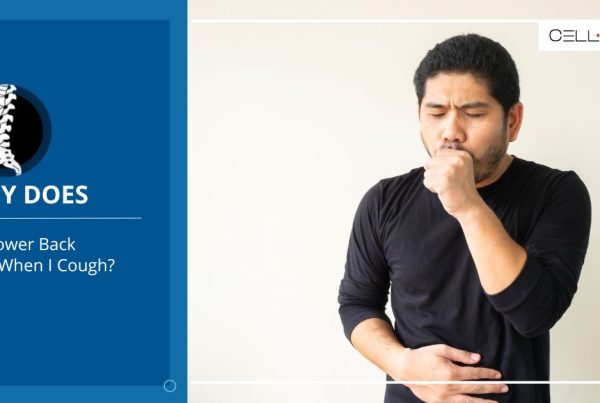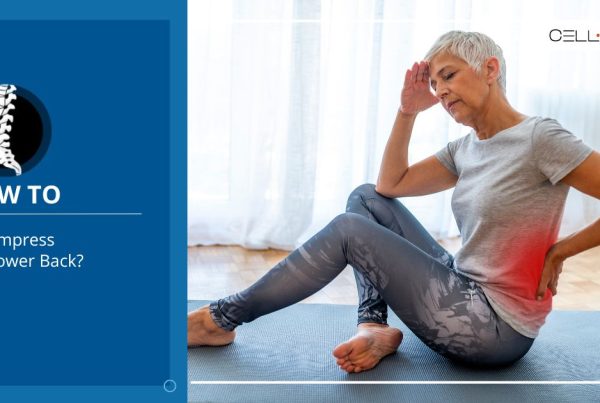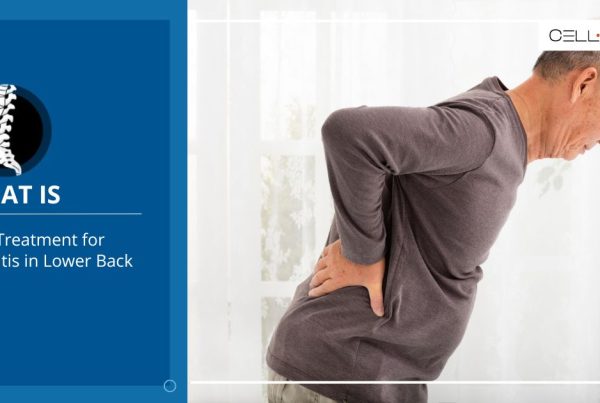Published on: October 28, 2024 | Updated on: January 18, 2025
A whopping 23% of adults globally suffer from lower back pain, indicating that anyone can experience it at some point in their lives.
Our lower back, called the lumbar region, is essential for balancing our body weight. However, persistent lower back pain can result from bad posture, lifestyle habits, poor sleeping positions, and improper lifting of heavy objects.
Since many people suffer from lower back pain, it’s crucial to know the causes and recognize the symptoms for effective treatment options. If you’re wondering how to relieve lower back pain, some home remedies might help.
What Are the Symptoms of Lower Back Pain?
Lower back pain has a combination of symptoms. The most common symptoms include the following.
- Sharp pain
- Constant throbbing pain in the lower back
- Pain when lifting heavy objects
- Pain that radiates down the back of the leg
- Pain after moving your body
- Numbness
- Stiffness
- Tingling sensation in the lower back and legs
- Difficulty straightening your back
- Muscle spasms
How to Relieve Lower Back Pain?
Depending on the primary cause, you can relieve lower back pain in numerous ways. If you get lower back pain due to bad posture or sleeping positions, certain home remedies might help. Here are seven tips to relieve lower back pain.
1. Stretch Regularly
Our lower back, also called the lumbar region, has different groups of muscles. When these back muscles become stiff, pressure is applied to the joints, which causes pain.
If your lower back pain is caused by muscle stiffness, stretching regularly can reduce muscular tension and relieve pain.
2. Adjust Your Posture
Poor posture causes lower back pain because slouching constricts the nerves and blood vessels. Reduced blood flow to the spinal discs and muscles in your back strains the muscles, causing fatigue and inflammation.
Research concludes that people who spend hours sitting in the same position are at an increased risk for lower back pain. This pain is not from sitting. Instead, poor posture is responsible for backache.
You can sit upright. Avoid slouching when you work, and put a small pillow behind your back. If you sit for hours, you can also purchase an ergonomic chair.
3. Avoid Lifting Heavy Objects Improperly
Improperly lifting heavy objects can strain the muscles in your lower back. Any muscle spasm or strain causes radiating pain.
Proper body mechanics are important when picking heavier objects. If you work at the gym lifting heavy weights, you should wear back braces.
4. Cold and Heat Therapies
Lower back pain from an injury causes swelling. Applying a cold compress to your back muscles numbs the area, reducing pain.
Use a hot water bottle or heating pad if the pain lasts longer than 48 hours. The warmth relaxes the muscles by increasing blood flow to the area.
5. Reduce Pressure on Your Back When You Sleep
When you sleep flat on the back, it puts pressure on the spine, causing pain. Slightly adjusting sleeping posture alleviates pain.
Before sleeping, keep a pillow between your knees or legs to keep the knees elevated. This should align the spine with the pelvis, reducing lower back pain.
6. Gentle Exercises
Gentle exercises such as yoga and stretching ease pain by improving back movement, relieving muscular tension, and reducing muscle stiffness.
According to studies, people who do yoga or intensive stretching experience less back pain than those who don’t. Resting heals the body. However, sitting all day long can make the pain worse.
To promote healing, start with low-impact exercises such as walking or simple stretching. This will keep the muscles in your back from becoming stiff and causing pain.
7. Take Over-The-Counter Pain Relievers
If you’re wondering how to relieve lower back pain through medical treatments, start by taking over-the-counter pain relievers.
NSAIDs and acetaminophen are the two medications that can relieve back pain. They reduce inflammation and swelling in the lower back.
How Long Does Back Pain Last?
The duration of pain depends on the cause. Lower back pain from muscular strain and overexertion subsides in a few days to weeks.
If the pain results from obesity, weight management and exercise can help. Other causes, such as poor posture and improper sleeping positions, cause pain for weeks unless you change your lifestyle habits.
Chronic lower back pain lasts for more than three months, while acute pain lasts for two to four weeks. You should consult a healthcare provider if the pain persists for over three weeks.
How to Relieve Lower Back Pain From Underlying Medical Conditions?
Many underlying medical conditions, such as arthritis, herniated discs, spinal stenosis, and sciatica, cause lower back pain. Relieving lower back pain from medical conditions requires managing the condition through proper treatment.
Consult a physiotherapist or a chiropractor. Chiropractors relieve lower back pain by working on the bones, nerves, muscles, tendons, ligaments, and attached structures.
Lower back pain in females could be due to pregnancy, endometriosis, ovarian cysts, or menstrual cramps. Hormonal therapy can help. However, if the pain persists for more than three months, consult a medical professional, as this pain classifies as chronic.
If you have mechanical lower back pain, it could restrict movement and impact your quality of life. First, you should focus on home remedies to relieve pain.
You should seek immediate treatment if you notice symptoms such as radiating pain at the back of your leg, sudden jolting pain, or difficulty standing up straight.
Wrap Up
Lower back pain is quite common due to several causes. The most common cause is strained muscles and ligaments in the back. If you can identify the cause, it’s easier to manage the condition.
Focusing on healthy practices such as stretching regularly, adjusting posture, and reducing pressure on the back reduces lower back pain.
However, if the pain persists for over three weeks and restricts movement, you should see a doctor for medical treatment. Medical treatment options include physiotherapy, corticosteroid injections, surgical interventions, and chiropractic adjustments.
Sources
Footnotes
- Sai Kripa, Kaur H. Identifying relations between posture and pain in lower back pain patients: a narrative review. Bull Fac Phys Ther. 2021;26:34.
- French SD, Cameron M, Walker BF, Reggars JW, Esterman AJ. Superficial heat or cold for lower back pain. Cochrane Database Syst Rev. 2006 Jan;2006(1).
- Lis AM, Black KM, Korn H, Nordin M. Association between sitting and occupational low back pain (LBP). Eur Spine J. 2007 Feb;16(2):283-298.
References
- Lower Back Pain. Cleveland Clinic. Accessed 09/02/2024.
- Understanding Lower Back Anatomy. Spine-Health. Accessed 09/02/2024.
- Stretching for Back Pain Relief. Spine-Health. Accessed 09/02/2024.
- Lumbar Strain (Weight Lifter’s Back). Loma Linda University Health. Accessed 09/02/2024.
- Yoga or Stretching Eases Low Back Pain. National Institutes of Health. Accessed 09/02/2024.
- Low Back Pain. Johns Hopkins Medicine. Accessed 09/02/2024.
- Common Causes of Back Pain. National Institute of Arthritis and Musculoskeletal and Skin Diseases. Accessed 09/02/2024.
CELLAXYS does not offer Stem Cell Therapy as a cure for any medical condition. No statements or treatments presented by Cellaxys have been evaluated or approved by the Food and Drug Administration (FDA). This site contains no medical advice. All statements and opinions are provided for educational and informational purposes only.
Dr Pejman Bady
Author
Dr. Pejman Bady began his career over 20 years ago in Family/Emergency Medicine, working in fast-paced emergency departments in Nevada and Kansas. He has served the people of Las Vegas as a physician for over two decades. Throughout this time, he has been met with much acclaim and is now the head of Emergency Medical Services in Nye County, Nevada. More about the doctor on this page.
Dr Pouya Mohajer
Contributor
Pouya Mohajer, M.D. is the Director of Spine and Interventional Medicine for CELLAXYS: Age, Regenerative, and Interventional Medicine Centers. He has over 20 years of experience in pain management, perioperative medicine, and anesthesiology. Dr. Mohajer founded and is the Medical Director of Southern Nevada Pain Specialists and PRIMMED Clinics. He has dedicated his career to surgical innovation and scientific advancement. More about the doctor on this page.









